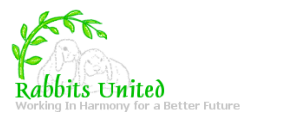Vitamins are essential elements in the maintenance of health. They are good for you!
But that does not mean that more than your daily requirement is better for you. In some cases it is bad for you.
In feed manufacturing it is customary to add a vitamin mineral premix, which is usually a mix of synthetic vitamins. Some of these vitamins deteriorate gradually from the day of manufacture and to cover this angle a six month date is put on animal feeds as a date until which these vitamins are present.
Vitamins are included in a feed at a level to ensure that the full daily requirement for all vitamins is available right to the end of the six month “ life” of the feed.
There are potential pitfalls with this policy. Some vitamins may be included at a rate of 3-4 times the recommended daily requirement in some cases and no account can be taken of the animal that eats a lot and the one that eats very little. Thus the potential for over dosing and under dosing is inherent.
If you subscribe to the theory that the commercial world knows best you will not worry, but there are serious questions being asked about vitamins D and A both of which are toxic when over fed. There is some disagreement as to which is the most toxic and in my opinion it is a pointless competition. Suffice it to say that too much of each is not good.
There is a serious problem with the sourcing of both vitamins for obligate herbivores as the source for both is fish oil.
“Is there an alternative to the use of synthetic and inappropriately sourced vitamins?” I hear you ask. As far as vit A is concerned the safe alternative is to feed green forages which are naturally very high in beta carotene which is the precursor of vitamin A. when eating a green plant the herbivore will only convert its requirement in vitamin A from beta carotene.
Vitamin d (now thought to be more a hormone than a vitamin) comes in two forms D3 which is the form we all utilise and synthesise from sunlight and the precursor for which is sourced from fish oil, and D2 which is synthesised from its precursor found in plants which have been irradiated with ultra-violet. The irradiated plant could take the form of yeast cells exposed to ultra-violet in a laboratory or sun-dried forage (hay)exposed to the sun.
So what does your average rabbit need in the way of vitamin D supplementation.
In the summer less than an hour of strong sunlight per day will be more than enough to synthesise enough vitamin D to supply all its needs and store enough in its liver to see it through to the depths of winter. This can be supplemented with a sun lamp for indoor rabbits. The liver has an amazing capacity for vitamin D storage. Alternatively if you have a good supply of sun-dried hay from a reliable source this will contain enough, ergocalcipherol the precursor of ergosterol (vit D2) to supply all the vit D requirements of your pet. Further supplementation should be totally unnecessary and possibly harmful.
There are exceptions to this rule as usual. Birds, reptiles and some apes (but not humans) cannot utilise vit D2 effectively and thus they do need fish oil, eggs or animal derived D3 if they are not kept in an environment lit with adequate ultra violet B.
The role of vit D is in the balancing of calcium and phosphorous to enable the production of bones and teeth. Inadequate vitamin D will lead to weak bones and rickets whilst excess vitamin D will lead to the deposition of calcium crystals in soft tissues and the kidneys. It is interesting to consider the bad press the wonderful forage alfalfa has due to the high levels of bio available calcium and the often stated risk of the deposition of calcium in the soft tissues and kidneys. This appears to be a problem mainly in the United States where large amounts of the very cost effective alfalfa hay are fed. This hay has more than enough vitamin D present in its naturally occurring form for any herbivore. However it is also fed with cereal feeds with synthetic vitamin D levels recorded to be as much as 3 to 4 times the animal’s daily requirement. It does raise the question as to whether the problems arise more from the massive overdose of vitamin D rather than the levels of calcium present. Sadly I do not have the answer. However the fact that it is generally accepted that in a rabbit being fed a diet deficient in vitamin D it is unlikely any symptoms for this deficiency will be seen as the rabbit is more likely to die from other causes before the deficiency would manifest itself, suggests that there is more risk from overdosing than under dosing. Put another way it would have to be a very old rabbit to suffer from serious rickets.
As a guide for rabbits we would recommend a diet based largely on sun-dried and artificially dried grass with an inclusion of alfalfa or Lucerne as we like to call it.
For chinchillas and cavii we would pass on the Lucerne but select the grasses very carefully.
As a footnote to aid your decision making process: Vitamin D is a very effective and increasingly used ingredient in rat poisons. I think I fall slightly on the side of not overfeeding it.

